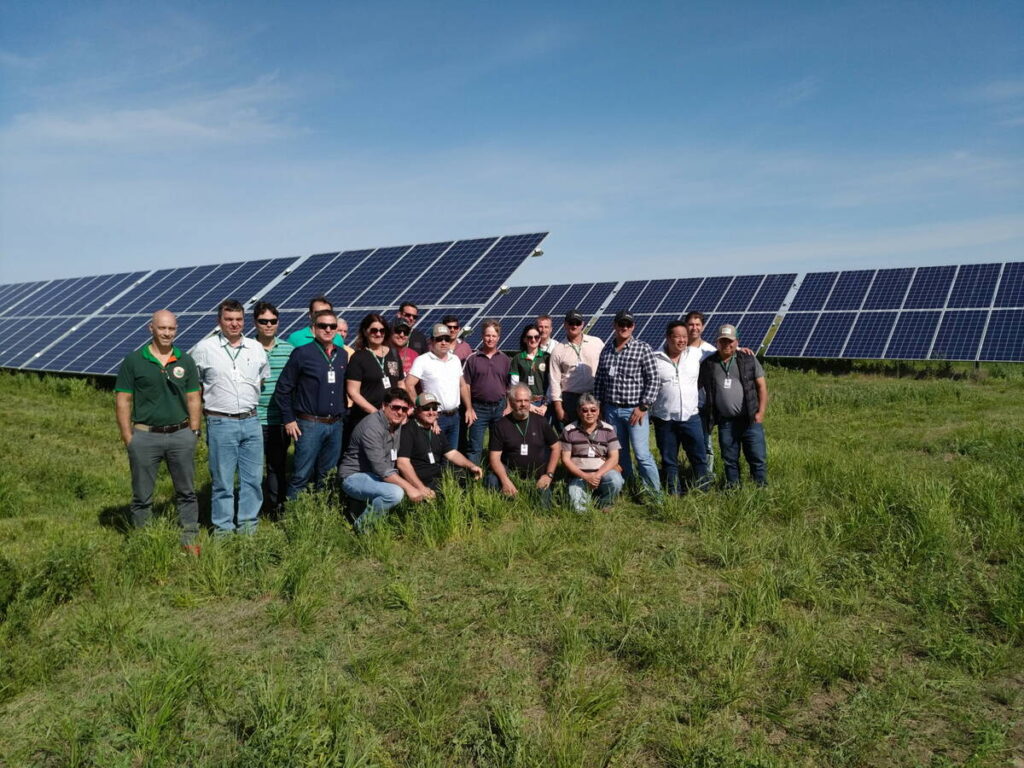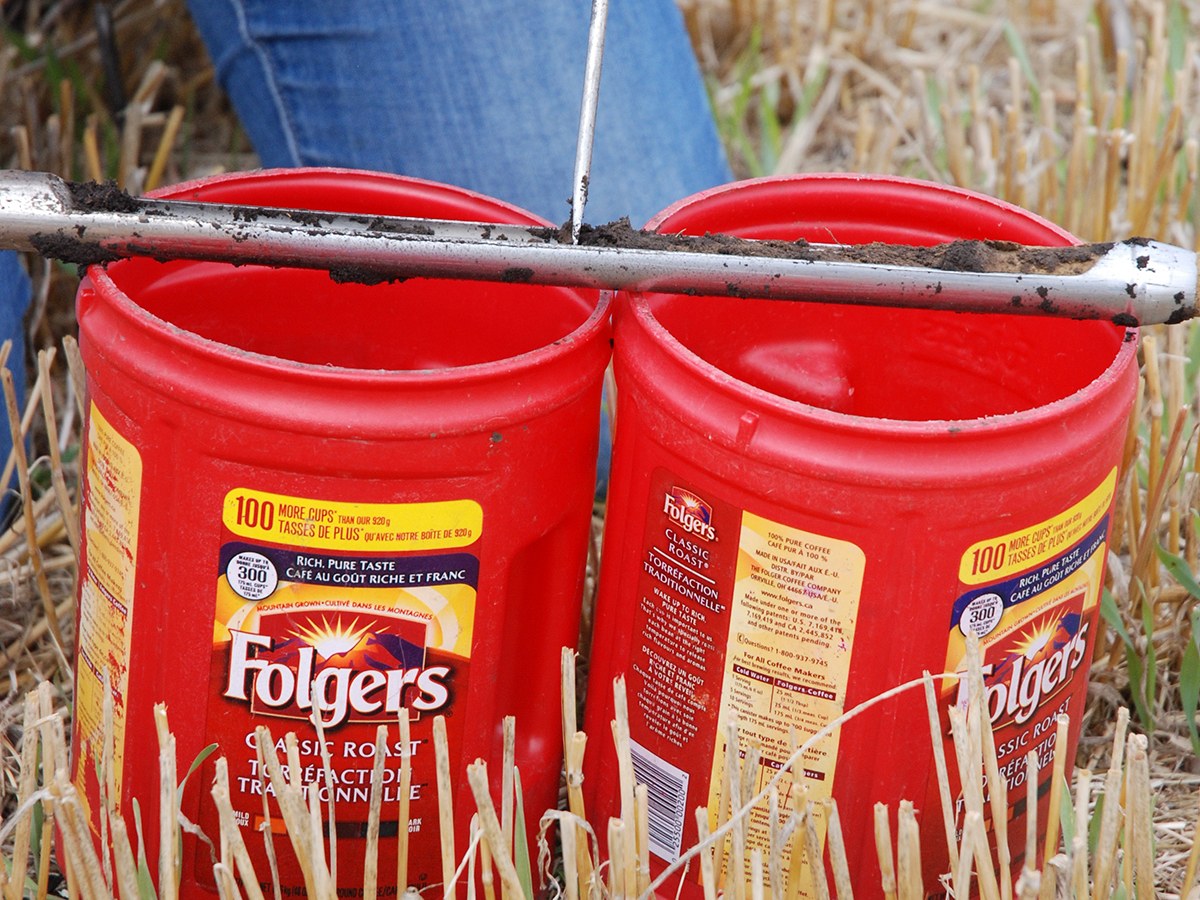Alberta irrigators put power of the sun to work

An early adopter of using solar power to operate irrigation equipment says after several years, he’s convinced the system is a win for farmers.
The Nelson family operates Merlinds Farms south of Grassy Lake. They first used solar-augmented pivots in 2017, after conferring with utility firm Enmax and solar installation company Solar Optix.
“My brother and I were the very first ones in Alberta to put in solar power to offset (large-scale) irrigation,” said Cory Nelson.
Read Also


Soil health survey to canvass farmers on real-world practices
The Soil Health Network says their new survey is meant to keep farmers in the driver’s seat when it comes to adopting on-farm practices.
“At the time, we thought it’d be an interesting investment and stabilize our power price, and it’s definitely done that. It’s done very well. “
The panels can’t run the pivot themselves; they still require a link to the grid. Over the course of the year, they create enough energy, some of which is sold back to the grid, to offset the power needed during the irrigation season.
“It offsets the total amount of power in the year. In the winter time, your metre is spinning one way into the grid and in the summer time when you need it, you use it,” said Nelson.
The family initially installed a 91.8-kilowatt array, which is estimated to produce 125.7 megawatt hours or enough to run a pivot irrigating four quarter sections of land, and a 44.6-kW array, which produces approximately 60.66 MWh, or enough to irrigate two quarter sections of land.
Two years later, they put eight more in on parcels not useful for agriculture and observed rapid advancements in the technology in a very short time with the results.
“The first one we put in was decent, but two years later the improvement was unbelievable,” said Nelson.
“The footprint of the solar is a third smaller than what it was when we originally put in. I personally would never put it in the middle of an irrigation field because that’s not the best use of the land. We put it in an inaccessible corner that you are really not using for productive farmland.”
Innovations have included bifacial panels that can reflect the sunlight off of snow in the winter that slightly improves efficiencies.
“They find so many of these little things in improvements over time. If I hadn’t of put that first one in, I wouldn’t have put in the second, third or eighth one either. You can’t be afraid to try,” said Nelson.
It started a movement where dozens of Nelson’s farmer friends have put them in as well after seeing the farm’s initial success.
Original estimates at the time of sign-up was the system would pay for itself in approximately 15 years. Now with years of crunching numbers, the payoff will come much sooner.
When energy prices went up, the return was quicker with newer panels coming out to a six or seven year time frame.
Although the Nelsons accessed a different program at the time, Nelson said Growing Forward gave out grants of up to 30 per cent to go toward innovative products, which included solar-powered pivots.
The uptake was so immediate that the program ran out of funding in a few months, with initial estimations the funding would last for a couple of years, Nelson said.
“We took a leap. They came out after the first year and took that data and everybody after put it in because they could see it work. Everyone that was skeptical that it wasn’t going to work, it actually worked better than what we expected,” said Nelson.
“As you improve the equipment as you go on, it’s even better now.”
Fossil fuel and alternative energy are often viewed as technologies that must be pitted against each other, but Nelson said he sees synergy, where it is not an either/or situation.
Instead, the two can augment each other. Solar power can be intermittent at times, and natural gas and coal provide stability.
“I fully support developing and advancing power in oil and gas industries. I see them as extremely important and important to both our province and our country,” said Nelson.
“You can develop those and other things at the same time. The proof is in what I have done. It has its place.”
Nelson said Norway is an example of what can be done.
It has increased its oil and gas sector every year but has the most electric cars in the world — 82 per cent of new car sales in 2023 were electric vehicles — and a net zero grid.
“Canada is no different. Our power grid is over 80 per cent net zero right now. We are way ahead of the Germans and the Americans and all these others countries in the world from that standpoint,” said Nelson.
The solar panels are expected to last longer than the pivots themselves — 16 to 25 years for pivot systems with proper maintenance and 25 to 30 years with solar panels, according to industry estimates.
Source: producer.com


